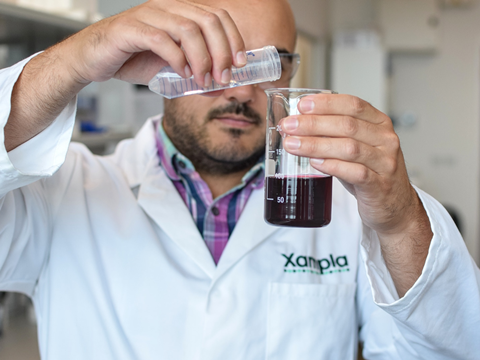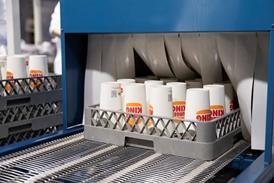
Peer-reviewed research now suggests that Xampla’s microscopic natural polymer capsules protect fat-soluble active ingredients through the transit, storage, and simulated digestion of food and drinks to be released in human intestines.
Factors like UV light, low pH, and high temperatures can degrade the essential nutrients in fortified food and drinks. As such, brands have conventionally added larger amounts of nutrients into their products to compensate for any losses by the time the consumer eats or drinks them – a process that maintains consistency with on-pack nutrition claims, yet drives up costs.
Xampla’s multi-patented microencapsulation technology is designed to keep nutrients stable in different food and beverage products and release nutrients in the upper gut for optimized impact. Reportedly, it has a low pH and can protect against oxidation, as well as mask any undesirable flavours.
Now an open-access paper published in the latest issue of the Royal Society of Chemistry’s Sustainable Food Technology journal suggests that Vitamin D2 in spray-dried plant protein stays stable in transit, storage, and throughout digestion, only releasing inside the small intestine.
Industrial spray-drying equipment was used to test the scalability of this process to a full-size commercial dryer. Apparently, the protein did not degrade and maintained its durability, even when mixed vigorously and exposed to boiling water in an emulation of pasteurization conditions.
These results indicate that Xampla’s plant protein microcapsules retain oil-based activities all the way to the intestinal phase – and, in turn, that fat-soluble ingredients in microscopically sized particles can be added to ‘convenience’ foods and liquids (e.g. plant-based supplements, vitamin-enriched drinks, and shelf-stable probiotic foods) without sacrificing taste, texture, or ingredient stability.
“This paper provides the clearest evidence yet that our plant protein microcapsules solve a major challenge in the functional food and supplement industry,” says Dr. Marc Rodriguez, chief technical officer at Xampla.
“We can take oil-based additional ingredients and ensure they remain stable through processing, transit and storage, all the way to digestion.
“The additional nutrients are substantially released where they can be most effectively absorbed, in the small intestine.”
Looking ahead, Xampla plans to work with the Quadram Institute Bioscience and Professor Arjan Narbad to further develop the technology for probiotic applications – a project supported by Innovate UK funding.
Professor Pete Wilde, Emeritus Fellow in food structure, colloids and digestion at the Quadram Institute Bioscience, added: “Our collaboration with Xampla represents a significant development of what is possible in nutrient and probiotic delivery.
“This study shows how a scalable approach with natural polymers can overcome traditional formulation challenges and help bring more effective functional products to market.”
Last year, Xampla partnered with Yili Innovation Centre Europe to test and validate its microcapsule technology – aiming to accelerate it deployment and scale it up from proof of concept to full-scale production.
It subsequently partnered with Lehmann Ingredients to cut down on ‘overage’ costs when supplying fortified products. Apparently, this made Lehmann the first distributor to partner with Xampla using this technology, with the microcapsule technology first used in collaboration with soft drinks manufacturer Britvic.
In more recent news, Xampla’s plant-based Morro polymer has been used to coat corrugated paper delivery boxes from Huhtamaki, which Lieferando is now distributing to partnering restaurants. Morro is said to be contact-safe, PFAS-free, home-compostable, and fully biodegradable at end-of-life.
If you liked this story, you might also enjoy:
The ultimate guide to the Packaging and Packaging Waste Regulation in 2025
How are the top brands progressing on packaging sustainability?
Everything you need to know about global packaging sustainability regulation in 2025
The key to increasing the use of reusable packaging in supermarkets






















No comments yet